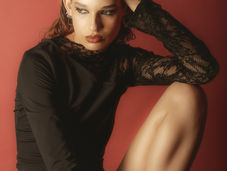All Too Human Exhibition Review - Tate Britain
- Isabel Veninga
- Apr 18, 2018
- 4 min read
28th February – 27th August 2018
Adult: £19.50
Concessions: £18.50
On February 28th, Tate Britain launched a new exhibition, dedicated to human life, named “All Too Human,” after Friedrich Nietzsche’s famous work Human, All Too Human. Even though the exhibition’s timeframe stretches over an entire century, it does share a similar theme in all rooms: its main objective is to celebrate the raw, transcendental expression of (human) life. A recurring motive is existentialism, its heavy emotions and anxiety.

The exhibition kicks off with mainly human figures, to set the tone of intimacy, before diving into the context with the study of physical experience and the London background most of the painters in the exhibition worked in. A lot of attention in the exhibition is directed at the post-war existentialism of the 50s. Where it is understandable that Tate Britain put this philosophical movement under the category of “Human Life,” some of the paintings depicted in the exhibition do not have anything directly to do with humanity itself; paintings vary from landscapes to still lives to abstract interpretations of city skylines, all by painters such as Souza, Kossoff, Uglow, and Auerbach. Where the existentialist feeling of anxiety and the overbearing responsibility of freedom for the individual is very present in the dark undertones of most paintings, the surprising lack of portraits in some rooms or the added still life paintings often feels confusing. Some paintings feel like fillers in rooms, whereas in other rooms it feels like a certain concept is not developed enough because otherwise it would not fit within the theme of the exhibition as a whole.

That is not to say that there aren’t any portraits displayed in All Too Human. Coldstream, Freud and Bacon shine on the canvas. Bacon’s raw brushstrokes seem to take you back to his studio, where you can vividly imagine him pouring his heart out in a deep trance, attempting to capture the overwhelming feeling of loneliness. These masters in 20th century art are the shining stars of the exhibition, a fact that is verified by the structure of the rooms in which the artwork is displayed. Lucian Freud has the entirety of room 7 dedicated to his 60’s portraits and nude paintings. But where it is clear that Freud is a visual genius and a terrific painter, the submissive angles and postures of women depicted in his paintings sometimes feel out of place, considering that All Too Human aims to celebrate the female artist and therefore battle the often uneven social hierarchy in the art world. While looking at the paintings, I asked another women next to me, “it makes you uncomfortable, doesn’t it?” To which she replied, “very uncomfortable.” However, the uncomfortable feeling that accompanies Freud’s paintings can be celebrated in other artworks, where he deliberately tweaks or enhances proportions to highlight certain human traits (big hands, small eyes, defined muscles, bones). His paintings are beautiful, hyperrealistic, with delicate brushstrokes. The “physical experience,” explored earlier in the exhibition, returns here with the different types of texture of paint in Freud’s paintings.

Bacon is, in my opinion, the height of the exhibition, gracing multiple rooms with his confronting artwork: macabre triptychs dedicated to his lost love, portraits with distorted faces and screaming mouths, accompanied by added media in the form of photography as inspiration for his paintings — a great concept, which the exhibition could have explored even more than with one wall of five images only. Bacon effectively captures the feeling of living life beyond your control, expressed by figures who are literally being forced in unnatural positions. His paintings evoke a deeply disturbing fear of loneliness, a relatable emotion for every visitor.
The second-to-last room in the exhibition is dedicated to Paula Rego. Rego specifically focuses on the variety of stories regarding the hassle of the daily routine of humans, and the room is fittingly titled “Life is the Wildest Story.” Rego places women in the centre, granting them the starring role of society in her work.

All Too Human concludes with one last room, an ode to the younger artists. Jenny Saville stands out in this room with an impressively huge, hyperrealistic, bloody self-portrait, which stares at you with an empty gaze. It’s a shame that this room is placed in the end of the exhibition, when the visitors have already gotten so many impressions from other artists, and the works seem less impressive than they actually are.
This exhibition implicitly shows the conflict between showing traditional genius, popular works by famous artists, with slightly sexist undertones, while at the same time trying to battle the conservatively male-dominated art world and the overlooked artists that represent diversity and women in art. Additionally, the exhibition sometimes feels slightly disorganised, with still-lives and landscape paintings that look oddly out of place between the vulnerable human portraits. But aside from this, it effectively emerges the visitor in the feeling of what it means to be “All Too Human:” life, as depicted, is anxiety, loss, vulnerability, yet it’s wonderful.

























Comments